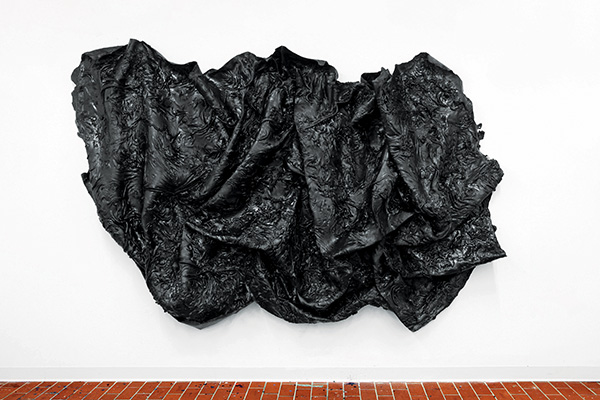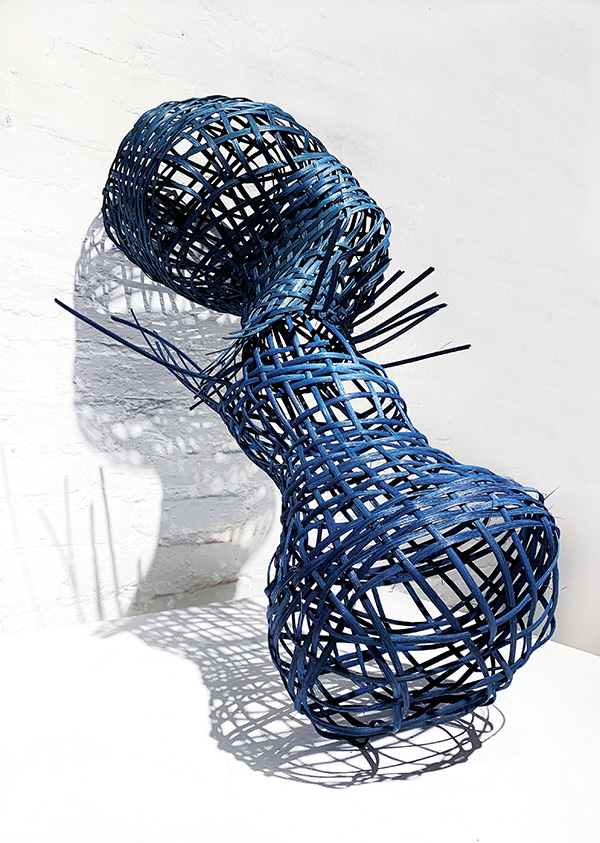Arresting Art
From the fire of disorder rises an assembly of creatives devoted to Black expression
By: Jennifer Mancuso
There were artists on the slave ships. We know this from the rock paintings and copper masks they left behind. The fingerprint of Black artistry continued once the ships docked along the shores of America with contributions from enslaved people, of note, artisan Philip Reid, potter David Drake, and daguerreotype photographer Augustus Washington. Later, a lightning bolt of artistic expression struck at New York City’s 110th Street, including artists such as Archibald Motley Jr. and sculptor Selma Burke. A thundering Black Arts Movement followed with collagist Romare Bearden and painter Faith Ringgold. Yet perhaps the longest and most enduring “storm” began in the Bronx in the early ’70s and continues today—Hip Hop, a combination of griot storytelling with blues, poetry, dance, and graffiti.
Now, amidst a global pandemic, a divided government, and racial unrest, there comes another upheaval in George Floyd’s America—and with it, who do we find at the crest of this tidal wave of social justice? The creatives. Meet five New England artists who are weaving old traditions with new technology and adding their imprint to this unprecedented time.
Jessica Brown
Cranston, Rhode Island
theladyjbrown.com
Growing up as a TV kid, Jessica Brown didn’t identify with the standards of media being projected onto her. Her life size set designs reconcile her past with representation. In one of them, she shares a picnic with Sister Bear of The Berenstain Bears series while a KKK rally marches in the background. In these reimagined pieces, Brown, a faculty member at the Rhode Island School of Design, has a look of wonder on her face and the effect is to disarm the viewer and create nostalgia. “My work is highly digestible and easy to consume. The subject matter that I am exploring is heavy. It’s real to some people and invisible to others,” she writes in an email.

Her painting, Child’s Play, the first of a series titled, No Matter Where We Go, They’ll Always Get Us, deviates from her previous world-building using the Lego® figure as an entry point. Her first painting in 10 years, Brown struggled with the piece due to the ongoing violence against Black men in this country. “The innocence of the Lego® figures makes it seem playful and fun. So superimposing something as awful as the murder of Trayvon Martin, George Floyd, Ahmaud Arbery, Tony McDade, Breonna Taylor is heavy…and every time I went to the painting, I was facing my own mortality.” As an educator, Brown’s hope would be for minority students to separate race from art and not have “…the burden of speaking for your whole race.”
Sharif Muhammad
Jamaica Plain, Boston
sharifmuhammad.com
Sharif Muhammad uses his art to show emotion, knowing Black people in this country cannot. In the months following quarantine, the Boston, MA-based artist admits to feeling a loss of safety, which has translated to a notable absence of his in-person art events. Through social media, he has remained connected to his community and gained a larger following. His digitized prints have allowed people of color an affordability that one-of-a-kind works do not provide. “At first, I’d make original paintings of people of color, and then it felt like the majority of them couldn’t afford the art that was about them,” Muhammad writes in an email. The artist has reimagined Black representation in portraits, including a recent deck of cards using Black images to represent royalty.

While most of his pieces center on Black joy, some illustrations directly confront race. With these, Muhammad intends to reclaim the flag as a symbol of patriotism and not Trumpism. The father of two young children, the artist hopes for a shift for future Black artists. “I wish I could say that the pieces that address racism would no longer be relevant, but I think that’s wishful thinking.”
Allana Clarke
New Haven, Connecticut
allanaclarke.com
As a NXT Haven artist-in-residence in New Haven, CT, Allana Clarke used her new studio and time in quarantine to propel her sculptures. In her journey of healing through her work, the Trinidadian-born artist tries to reconcile with her parents’ American Dream and the racial injustice she feels as a Black woman living in the United States. “That is duly because I have Caribbean heritage and because of the violence that is enacted against Black bodies in this country. I’ve always felt this tension, even before I was able to articulate it.”

Her epoxy forms conjure an ethereal sense, while the key ingredient—hair bonding glue—adds a layered meaning. The decision to use this substance, Salon Pro 30 Second glue, an ingredient wholly familiar to the Black community as a necessary evil, represents a break from the European ideal standard of beauty.
Known to damage the hair follicle over time, the adhesive also gives the artist an opportunity to use her own body to manipulate the form and defamiliarize it, thus crippling its intended function. “It’s been a wild and perplexing material to work with as a way to work through the emotions that are connected to my mother and my relationship with her,” the artist writes. Clarke feels a catharsis in a process that changes the purpose of the glue. “It is a material that is rooted in trauma and dissociation, and now these pieces are profoundly beautiful.”
Ashley Page
Portland, Maine
ashleypagestudio.com
In the stillness of quarantine, Ashley Page felt the rumble of protests while at home with her mother in Minneapolis, MN. Her vantage point to the demonstrations in combination with the outpouring of “local and global solidarity” remained with her after she traveled back to Maine. “Seeing the amount of energy that poured from people [during the protests] and the need for collective healing, I better understood my role as an artist,” she writes in an email. Page had an opportunity to bring the energy from Minneapolis back East with a memorial in Portland’s Congress Square Park titled, In Memory of Those Taken, which depicts the faces of those lost to police violence.

Textiles, collages, and murals comprise Page’s portfolio; her basketry stands out as a study in tradition and culture. In her weaving work, the artist leaves the forms unfinished to “subvert” their intended use and create more of a sculpture. The collection is made more complex by her desire to reclaim the art form lost to colonization. “Growing up and engaging with art from the lens of the Western gaze, it is inherent that any skills or knowledge that I obtained through learning in an arts institution was a direct result of the systemic erasure of black, brown, and indigenous craft, contribution, and impact.” While she does respect and admire her mentors, she “[uses] their teachings to weave under-represented people and craft techniques back into the canon.”
Juniper Creative Arts
Brandon, Vermont
linktr.ee/junipercreative
Juniper Creative is “a whole vibe.” They comprise a Black and Dominican family collective, including creative director and concept designer Jennifer Herrera Condry, mural artist and illustrator Will Kasso Condry, and their daughter, visual artist and photographer Alexa Herrera Condry. During the pandemic, the trio found themselves living and working under the same roof, and instinctually came together to adapt their practices. “We’ve learned to pivot in ways that expanded our own skills, from Will creating more digital art to me becoming more adept at navigating social media for creators and entrepreneurs,” Jennifer writes. Part of their business model includes incorporating sustainability practices at their homestead in Brandon, VT. Creating resources translates to self-sufficiency in terms of housing, food, and income—all insecurities plaguing the Black community.

Their work is a collaboration in organic herbal tea blends, label design, and community murals using Alexa as the muse. Juniper Creative also places importance on community art projects like Kelis the Afronaut mural at Champlain Elementary School painted in September, 2020. “It seems like the only time that Black bodies are honored these days is in death. Rest in Peace and memorial murals help us remember the lives lost, the important fight for justice and reform, and the valuing of Black life,” says Will. He then compares the memorial murals to graveyards in Black communities, and as a way to balance this perception, the trio uses their public art to celebrate moments of Black joy and accomplishments.
Largely missing from galleries, Black artists today have graduated from graffiti walls to create virtual exhibits through social media and public arts. In these precarious times, one thing is certain: this group of Black artists will continue to expose matters of brutality, beauty, access, and joy to preserve the heritage of the vision and the voices who came before them. As a result, they are redefining the meaning of “representation.”
Jennifer Mancuso holds her MFA in Writing from the New Hampshire Institute of Arts. Raised in the shadow of the Boston Busing Crisis, the writer is completing a set of novels based on her experience growing up biracial while passing.
